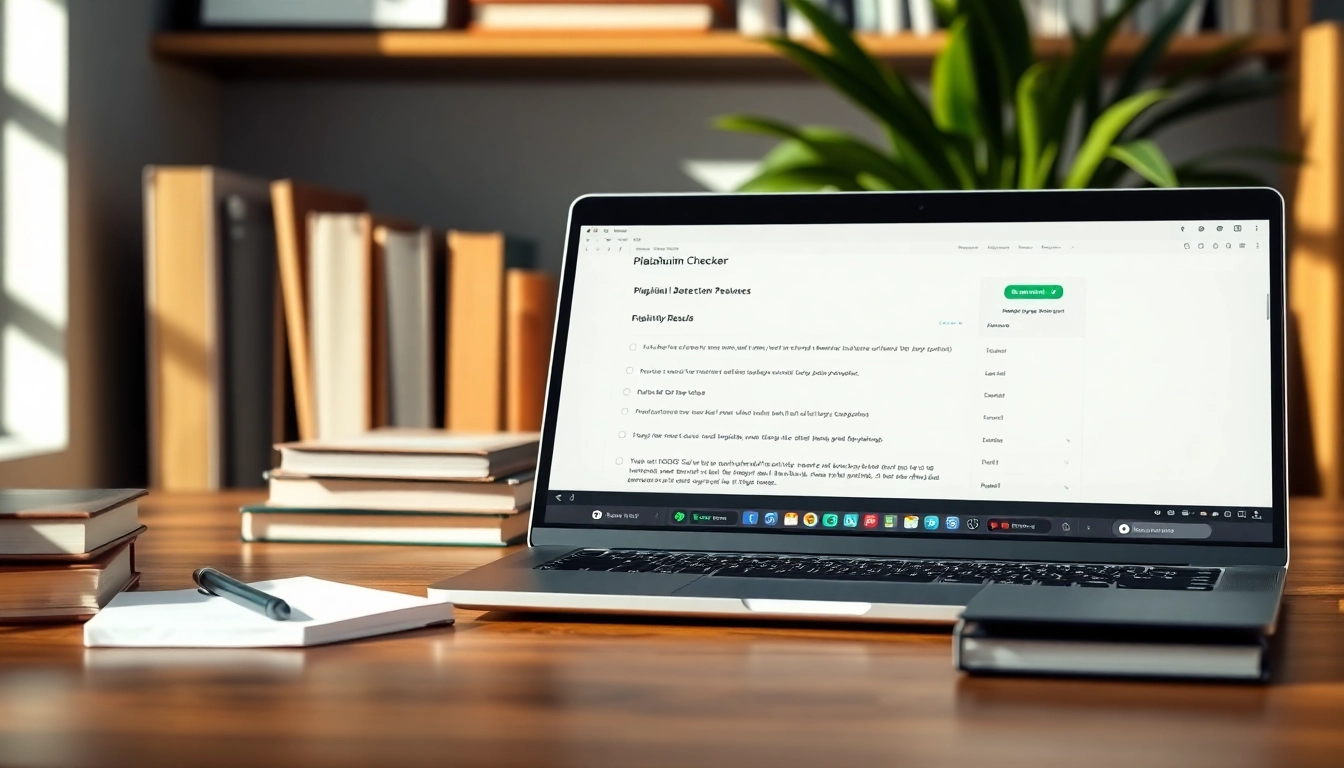Understanding Plagiarism and Its Impacts
Plagiarism is a pressing issue across various domains, including academia, journalism, and content creation. It involves the unauthorized use or close imitation of someone else’s work, presenting it as one’s own. This serious offense not only undermines the integrity of the individual who plagiarizes but can also have far-reaching consequences for institutions and industries. As digital technology proliferates, the prevalence of plagiarism has only increased, making the need for reliable plagiarism detectors vital.
What Constitutes Plagiarism?
At its core, plagiarism can be broadly categorized into several types:
1. Direct Plagiarism: This occurs when an individual copies another’s work word-for-word without attribution.
2. Self-Plagiarism: In this case, a writer reuses their own previously published content, masking it as new work.
3. Mosaic Plagiarism: This involves piecing together phrases and ideas from various sources without proper citation, creating a patchwork of borrowed content.
4. Accidental Plagiarism: Often unintentional, this type happens due to a lack of understanding of proper citation practices, resulting in failure to credit sources adequately.
Each of these forms of plagiarism can impact the authenticity and credibility of the creator’s work, undermining the trust of their audience.
The Consequences of Plagiarizing
Engaging in plagiarism carries several serious consequences. These can manifest as:
– Academic Penalties: In educational institutions, students caught plagiarizing may face severe repercussions, including failing grades, academic probation, or expulsion from their programs.
– Legal Ramifications: Plagiarism can lead to legal action, resulting in fines or penalties for copyright infringement.
– Damage to Reputation: A plagiarized piece can tarnish not just an individual’s credibility but also that of their affiliated institutions or organizations.
– Loss of Opportunities: Academic and professional prospects can diminish for those caught plagiarizing, as trust is a crucial element in establishing relationships in most fields.
These consequences make it imperative to use tools designed to detect and prevent plagiarism, ensuring one’s writing maintains integrity.
Why Use a Plagiarism Detector?
A plagiarism detector serves as a crucial resource for writers, students, and professionals alike. Here are several reasons why these tools are essential:
– Accuracy: Advanced plagiarism detectors employ robust algorithms that can identify similarities between submitted texts and an extensive database of existing works, ensuring accurate detection of potential plagiarism.
– Peace of Mind: Knowing your work is original can alleviate the stress associated with academic and professional writing.
– Educational Value: Many plagiarism detectors offer feedback and resources that can help improve users’ writing and citation practices.
– Time Efficiency: Plagiarism detectors save time by quickly scanning documents and providing detailed reports, allowing writers to focus on crafting quality content.
In short, using a plagiarism detector is an effective way to uphold academic and professional integrity.
How Plagiarism Detectors Function
Plagiarism detectors operate through a series of sophisticated processes designed to identify similarities in text. Understanding these processes can help users appreciate the value and limitations of these tools.
Comparing Texts Against Databases
Plagiarism detection typically starts with a simple upload or paste of the text into a software interface. Once submitted, the tool compares the provided content against a vast array of databases containing published articles, academic papers, websites, and previous user submissions.
Modern plagiarism detectors maintain extensive databases that get regularly updated to include the latest content from various sources. This large repository allows for a more thorough comparison and often enables users to check against millions of documents in seconds.
Detection Algorithms Explained
The core technology behind plagiarism detection tools often includes algorithms that can perform:
– String Matching: These algorithms break down the submitted text into smaller parts (like phrases) and perform matches against the database of known texts to find similarities.
– Semantic Analysis: Advanced detectors utilize natural language processing (NLP) techniques to understand the meaning behind words, allowing for the detection of paraphrased content that traditional string-matching methods might miss.
– Machine Learning Models: Many current tools employ machine learning to improve their detection capabilities, learning from previous findings to refine their algorithms continuously.
Understanding how these algorithms operate allows users to navigate plagiarism detection tools more effectively, leveraging their strengths for optimal results.
Common Features of Effective Detectors
Not all plagiarism detectors are created equal; a comprehensive tool typically includes features like:
– Detailed Reports: Users should receive in-depth reports highlighting sections of text that are flagged, along with links to the original sources.
– Citation Assistance: Many advanced tools integrate citation support, guiding users on how to correctly attribute sources.
– User-Friendly Interface: The best tools are intuitive and easy to navigate, enhancing the user experience.
– Integration Capabilities: Compatibility with other writing software or platforms can simplify the workflow for users.
These features can significantly improve the overall effectiveness and user experience of a plagiarism detector.
Choosing the Right Plagiarism Detector
Selecting an appropriate plagiarism detector is crucial for achieving the best results. Several factors should be considered during the decision-making process.
Free vs. Paid Tools: What to Consider
One of the first considerations when choosing a plagiarism detector is whether to opt for free or paid services.
– Free Tools: Often offer basic functionalities that can detect obvious plagiarism. However, these tools may have limitations on database access and reporting depth.
– Paid Tools: Usually provide access to more extensive databases, advanced detection algorithms, and detailed reporting. They can be well worth the investment for serious academics and professionals.
Assessing your needs and budget is essential when evaluating these options.
User Experience and Interface Design
User experience plays a crucial role in the effectiveness of a plagiarism detector. A tool with a complex interface can hinder users from maximizing its capabilities.
Look for tools that offer:
– Clear Navigation: An intuitive interface simplifies the process of submitting texts and accessing reports.
– Customization Options: Being able to adjust settings according to your needs can enhance user satisfaction.
– Mobile Compatibility: With an increasing trend toward mobile use, tools that function seamlessly on different devices are valuable.
A positive user experience ensures that individuals are more likely to utilize the tool correctly and efficiently.
Integration with Writing Tools
Consideration for tools that can integrate directly with writing platforms like Microsoft Word, Google Docs, and others can save time and streamline the editing process. Such integrations can allow users to check for plagiarism in real-time without switching between applications.
Choosing a plagiarism detector that fits well into your existing workflow can enhance productivity and encourage proper citation practices.
Best Practices for Avoiding Plagiarism
While plagiarism detection tools are helpful, preventing plagiarism from occurring in the first place is ideal. Implementing best practices for writing can greatly reduce the chances of unintentionally committing plagiarism.
Proper Quoting and Citation Techniques
Learning how to quote properly and cite sources according to the relevant formatting styles (APA, MLA, Chicago, etc.) is vital. Here are critical aspects to remember:
– Quote Accurately: Use quotation marks for any text that is copied directly from a source and provide a proper citation.
– Use Paraphrasing Effectively: Rewriting ideas in your own words still requires attribution to the original source.
– Maintain a Consistent Citation Style: Familiarize yourself with the required citation style for your field, and apply it consistently throughout your work.
By mastering these techniques, you cultivate habits that will enhance the authenticity of your writing.
Understanding Common Knowledge
While it is essential to cite sources, understanding what constitutes common knowledge can prevent unnecessary attribution. Common knowledge refers to information that is widely known and accepted; it includes facts that are easily verifiable and do not require citation.
To determine whether something is common knowledge, consider:
– Scope of Knowledge: Information that most people within your field understand typically doesn’t require citation.
– Specificity: More specific claims often require citation, while broad generalizations may not.
Being well-versed in what counts as common knowledge helps maintain a balance between crediting original thinkers and writing fluidly.
Using Paraphrasing Effectively
Paraphrasing is not just about rewording; it involves understanding the source material and expressing ideas in a new form. To paraphrase effectively:
1. Read and Understand: Thoroughly comprehend the original text before attempting to rewrite it.
2. Change Structure and Words: Alter the sentence structure and use synonyms where appropriate while retaining the original meaning.
3. Credit the Source: Always provide attribution to the original author, even if you have paraphrased their work.
Practicing effective paraphrasing cultivates originality while respecting the ideas of others.
Evaluating and Interpreting Plagiarism Reports
Once a plagiarism detector has scanned a document, it generates a report outlining potential matches and providing a percentage score indicating the extent of overlap with existing texts. Understanding these reports is crucial for taking appropriate action.
Understanding Plagiarism Scores
The plagiarism score reported by detection tools typically ranges from 0% to 100%, where:
– 0% indicates no similarities detected.
– 1-5% suggests that some phrases may match but likely fall within acceptable parameters.
– Over 10% indicates significant textual overlap, warranting further investigation.
By interpreting these scores accurately, users can determine the necessary steps to rectify any issues.
Responding to Detected Issues
Upon receiving a plagiarism report, you should:
– Assess the Matches: Compare flagged sections with original sources to understand the context.
– Make Corrections: Revise the content that is found to be too close to original sources either by rewriting, paraphrasing, or citing appropriately.
– Recheck: After making revisions, resubmit the document to ensure it adheres to integrity standards.
Effective responses to detected issues will boost the authenticity of your writing while fostering continuous learning.
Improving Your Writing Based on Feedback
Drawing insights from plagiarism reports can also enhance writing quality overall. This may involve:
– Identifying Patterns: Repetitive issues may highlight areas where you lack citation knowledge or appropriate research practices.
– Seeking Guidance: Utilizing resources like writing centers, workshops, or professional editing services could foster better writing techniques.
– Engaging in Continuous Learning: Familiarizing yourself with citation styles, plagiarism policies, and writing strategies will cultivate a richer understanding of academic integrity.
Adopting these practices not only aids individual projects but can also contribute to a culture of originality and respect within larger academic and professional communities.















Leave a Reply